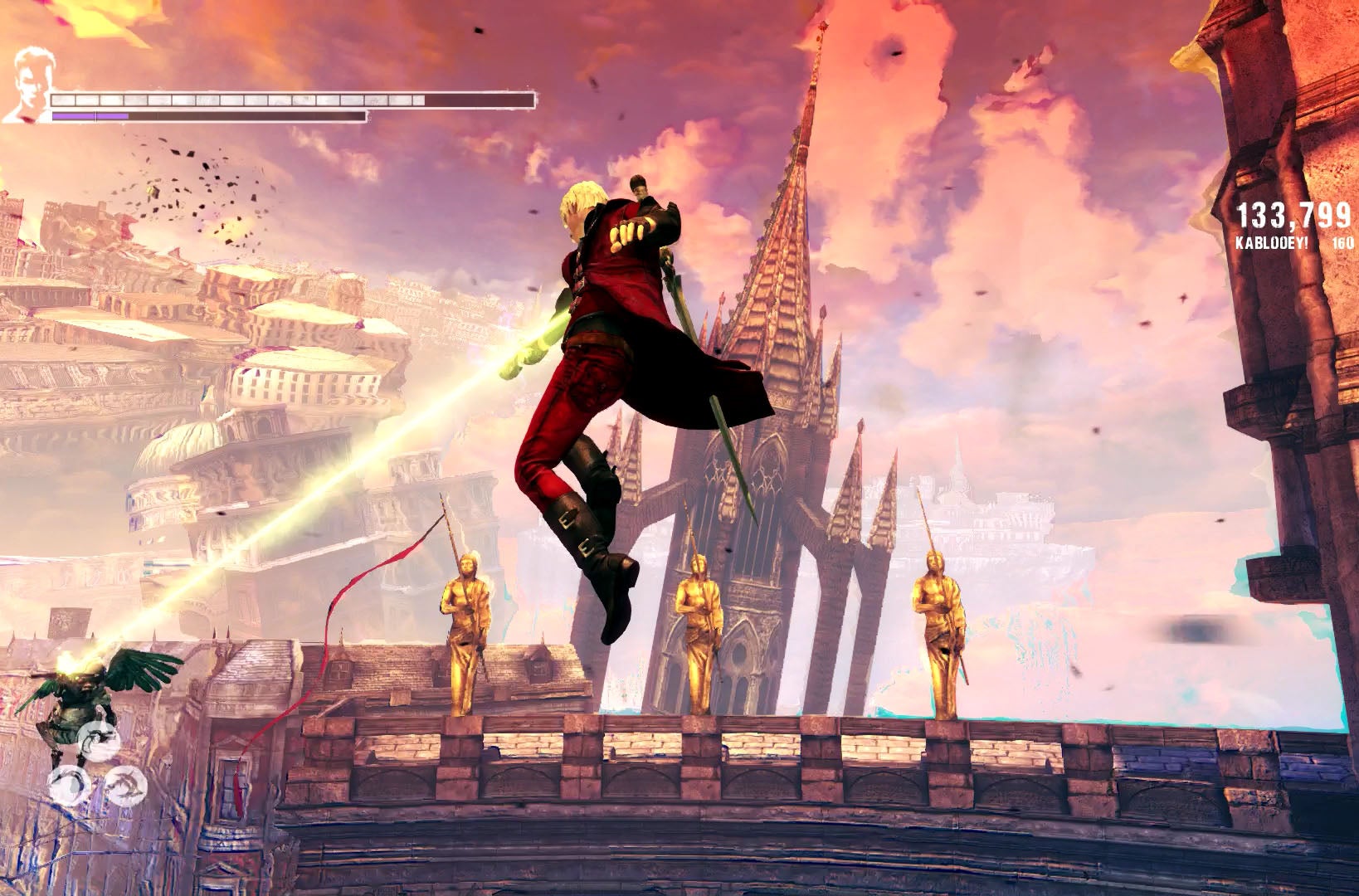DmC: Devil May Cry Definitive Edition review: new modes, less sexually explicit dialogue
29.99 ; PS4

Your support helps us to tell the story
From reproductive rights to climate change to Big Tech, The Independent is on the ground when the story is developing. Whether it's investigating the financials of Elon Musk's pro-Trump PAC or producing our latest documentary, 'The A Word', which shines a light on the American women fighting for reproductive rights, we know how important it is to parse out the facts from the messaging.
At such a critical moment in US history, we need reporters on the ground. Your donation allows us to keep sending journalists to speak to both sides of the story.
The Independent is trusted by Americans across the entire political spectrum. And unlike many other quality news outlets, we choose not to lock Americans out of our reporting and analysis with paywalls. We believe quality journalism should be available to everyone, paid for by those who can afford it.
Your support makes all the difference.When DmC: Devil May Cry came out in 2013 developers Ninja Theory polarised fans of the high-octane action series. DmC was a reboot, a ‘bro’ take on the half-demon Dante, re-imagining him with dark hair instead of white. They stripped him of his human-half origin and, importantly, made him half-angel, half-demon instead. Gamers were dubious of Ninja Theory, developers of Heavenly Sword, taking over the franchise. Why did Dante suddenly look like the lead singer of the emo band My Chemical Romance?
Despite this the game exceeded expectations and only those who resented the shift in direction seemed to harbour a strong dislike. It was a solid 8-12 hours of action gameplay as Dante hunted demons in a largely linear plot, in an attempt to kill the demon king Mundus. The reboot wasn’t wholly destructive, depicting, by the endgame, his growth into something more similar to his classic personality and style.
This new edition retains the same plot and mechanics with a new lick of paint, tweaked gameplay mechanics and innovative game modes. For those who didn’t play the original, the game’s set in Limbo City, a contemporary sprawl, whose citizens are subtly controlled by shadowy demons manipulating them from high-level positions of public affairs. A fizzy drink produces an effect similar to a ‘lobotomy in a can’, for example, and though it's a tired trope it serves its purpose here: largely to alienate Dante from society.
In the opening hour Dante is dragged into Limbo by a Hunter Demon on Bellevue Pier. This other dimension is roughly the same as the human world above but is a vibrant, twisted facsimile with demonic flora covering the surfaces. Humans here appear as shades, unable to be interacted with. Kat, the player's helper and a psychic, can appear as a ghostly figure. Less subtly, but visually arresting, Limbo reveals the truth hidden behind the demonic lies. Advertisements become demonic slogans: 'GLUTTONY IS GOOD' appears where previously there had been an advertisement for hamburgers. Dante defeats the Demon Hunter but the battle results in a lot of destruction, even in the ‘normal’ world above them. The Raptor News Network label Dante a terrorist. Thus, hunted by demons, hated by humans, Dante begins his journey towards redemption.
Though it might not be a subtle game, with more in common with God of War and Dante's Inferno than, say, Transistor or Bastion, it’s an enjoyable one which knows exactly what it wants to be. This new Definitive Edition locks the game at 60 frames per second and 1080p resolution though some cut-scenes run out of sync with the audio. Battles zip by as Dante switches on-the-fly from his angelic scythe Osiris, to his demonic pair of gauntlets, Eryx and other weapons.
The new version also adds a bunch of character and weapon skins to dress Dante up in his outfits from previous games. There’s also a new much-loved Turbo Mode which increases the game’s speed by 20%, resulting in even more frenzied action, as well as hurrying through some of the slower-paced plot. The developers have also added a new hardcore mode, which re-balances some of the combo system in an attempt to reward you for more creative combinations of attacks, realigning the fighting style with that of the older series. Fans of the series will also be glad to know they’ve removed some of the more cringe-worthy, sexually explicit, dialogue that seems to at least make it more palatable.
DmC was a surprising game when it came out in 2013. Though one might question the need for so many re-releases in this generation, it’s a solid game that looks brilliant and deserves to be played by more people.
Join our commenting forum
Join thought-provoking conversations, follow other Independent readers and see their replies
Comments